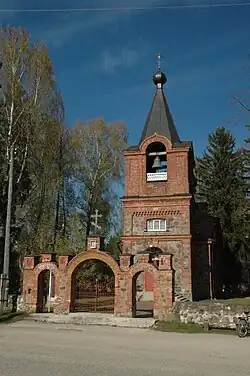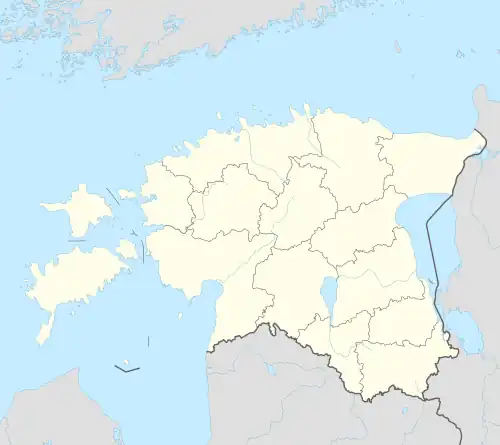Värska | |
|---|---|
 Church of Värska | |
 Värska | |
| Coordinates: 57°57′29″N 27°38′17″E / 57.95806°N 27.63806°E | |
| Country | Estonia |
| County | Võru County |
| Parish | Setomaa Parish |
| Area | |
| • Total | 4.6 km2 (1.8 sq mi) |
| Population (2021) | |
| • Total | 414 |
| • Density | 90/km2 (230/sq mi) |
| Time zone | UTC+2 (EET) |
| • Summer (DST) | UTC+3 (EEST) |
| Postal code | 64001 |
Värska (Seto: Verska) is a small borough (alevik) in Setomaa Parish, Võru County in southeastern Estonia. At the 2021 Census, the settlement's population was 414. It's the most populous village of the Parish.
History
Värska was first historically mentioned in 1585.[1] Värska is the birthplace of poet Paul Haavaoks (1924–1983).
Geography
Värska is located in the east of Võru county, near the border with Russia, 70 km southeast of Tartu. The town is in front of the Gulf of Värska, a dependency of Pskov Lake.
Landmarks
The parish is associated with the Seto Museum of Farming, which opened in 1998. Also located in southern Värska in the village of Verhulitsa is the holy tree Verhulitsa Laudsi Pettäi.[2]
See also
References
- ↑ "Setomaa, delightful sight!" (PDF). Värska Tourist Information Centre, Obinitsa Tourist Information Office and Veekeskuse Arendusselts. 19 January 2005. Retrieved 3 January 2022.
- ↑ "Pühapaikade andmekogu - Setomaa, Seto (EE), Verhulitsa Laudsi pettäi". andmekogu.hiis.ee. Retrieved 3 January 2022.
![]() Media related to Värska at Wikimedia Commons
Media related to Värska at Wikimedia Commons
This article is issued from Wikipedia. The text is licensed under Creative Commons - Attribution - Sharealike. Additional terms may apply for the media files.
